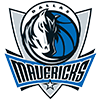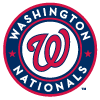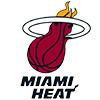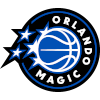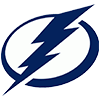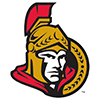This article will try to guess how the Falcons offense might look under new coach Arthur Smith. It will mostly focus on the numbers and keep schematic descriptions to a minimum. If you want a good article that visually breaks down the schematic details of the Smith offenses then this For the Win post from Charles McDonald is helpful.
Smith played an integral role in the emergence of the Tennessee offense over the last two years, remaking Ryan Tannehill as one of the league's most explosive passers while springing Derrick Henry for historic levels of rushing production. When the Falcons hired Smith as head coach this offseason the general assumption was that Smith would do what most coaches do when they take over a new team, which is cling to the same scheme that got them the job in the first place. If the Falcons' recent personnel moves are any indication, though, Smith might run something less like the Titans' run-heavy approach and something closer to its opposite.
Such a result would be uncommon in the NFL, but it would reflect well on Smith because it would show him for a prescient and pragmatic thinker – the opposite of a Kliff Kingsbury, who only knows how to mash the same combination of buttons over and over. Smith dominated in Tennessee with a run-heavy, two- and three-TE heavy game plan, but if he's a smart coach he can anticipate a different vision of success with Atlanta's very different personnel. There's
This article will try to guess how the Falcons offense might look under new coach Arthur Smith. It will mostly focus on the numbers and keep schematic descriptions to a minimum. If you want a good article that visually breaks down the schematic details of the Smith offenses then this For the Win post from Charles McDonald is helpful.
Smith played an integral role in the emergence of the Tennessee offense over the last two years, remaking Ryan Tannehill as one of the league's most explosive passers while springing Derrick Henry for historic levels of rushing production. When the Falcons hired Smith as head coach this offseason the general assumption was that Smith would do what most coaches do when they take over a new team, which is cling to the same scheme that got them the job in the first place. If the Falcons' recent personnel moves are any indication, though, Smith might run something less like the Titans' run-heavy approach and something closer to its opposite.
Such a result would be uncommon in the NFL, but it would reflect well on Smith because it would show him for a prescient and pragmatic thinker – the opposite of a Kliff Kingsbury, who only knows how to mash the same combination of buttons over and over. Smith dominated in Tennessee with a run-heavy, two- and three-TE heavy game plan, but if he's a smart coach he can anticipate a different vision of success with Atlanta's very different personnel. There's reason to believe Smith is exactly that – Atlanta doubled down on its pass-heavy personnel in free agency and the draft, pursuing only Mike Davis at running back while selecting mega-prospect tight end Kyle Pitts fourth overall, and Smith has already shown the ability to change his colors throughout his NFL coaching career.
Before Smith was named offensive coordinator in Tennessee he withstood four different head coaching regimes, and in varying disciplines. It's not common for incoming coaches to retain inherited coaching personnel like that, and the fact that all of Mike Munchak, Ken Whisenhunt, Mike Mularkey and Mike Vrabel chose to keep Smith on staff may well be an indication of promise. Smith covered a range of football disciplines over that span, first as defensive quality control and then offensive quality control coach for Munchak, before coaching offensive line (2013) and tight end (2013-2018). Smith has seen the game from a variety of angles, and with this Falcons offense he has a chance to show a vision independent of the one he inherited in Tennessee.
Playcalling and Personnel
When you have Derrick Henry it makes sense to make him the foundation of your offense. Smith built on the premise accordingly, leveraging the downward pressure Henry dictates to a defense and using it to create mid-range openings for A.J. Brown and Corey Davis to break from the sidelines off playaction. You could try to crash hard on Henry or sit back for the AJB target off the playaction, but either course left you unprotected against the other play. Smith's approach might seem like common sense, but it's more than what we can take for granted from NFL coaches.
Smith didn't merely adhere to common sense, though. His use of tight end personnel was mostly unprecedented in that he specifically pursued smaller, faster tight ends for the purposes of run blocking. Conventional NFL wisdom would tell you that a blocking tight end should be a big, powerful player capable of springing his gap against a defensive end, but Smith had the foresight to apply the zone-blocking offensive line logic of Alex Gibbs to the tight end position. Instead of emphasizing size and strength to clear out space, Smith emphasized speed and quickness to seal off angles and stall defenders at the second level. It's almost unheard of for a team to collect small tight ends – normally typecast as pass-catching specialists – and then have them work as run blockers for a running back who is bigger than them. But the theory was brilliant, and in practice the results couldn't have been better. 'Small tight ends to block for a huge running back' – you'd never get the idea off the ground in a conventional coaching room, but Smith forged ahead to great success. The range and speed of players like Jonnu Smith, MyCole Pruitt and Khari Blasingame sealed off the defense from undercutting Henry's momentum, and once Henry got up to speed he couldn't be stopped with any sort of consistency.
With Atlanta the personnel will look very different, beginning with the absence of a Henry-like foundation. With no Henry as the foundation, the Falcons can theorize different tight end functions than what Smith conceived in Atlanta. Perhaps Smith will again have a use for a MyCole Pruitt, but for now he does not. He doesn't even have a use for a Jonnu at this point. Jonnu's blocking prowess was an asset toward maximizing Henry, and Jonnu's YAC abilities underneath gave Tennessee strength in the space between the line of scrimmage and Brown's downfield domain, but in Atlanta the Jonnu role will likely look different.
The foundation in Atlanta almost necessarily is the passing game rather than the run, and the tasks entailed at tight end for Smith will change profoundly with that fact. This is an important detail particularly in light of the fourth overall selection of Pitts, and when visualizing this new arrangement it quickly becomes clear that, health permitting, Pitts might do in 2021 what no rookie tight end has done before. When you subtract a Derrick Henry and replace him with a Mike Davis, a great deal of slack remains, and Julio Jones and Calvin Ridley can only pick up so much of it. Functioning less as a second tight end and more as a third, tight end-versatile wide receiver, Pitts' rookie projections shouldn't dwell much on the results of rookie tight ends before him.
Projecting the Falcons offense
If you're as sold on Smith as I am, you're probably sold on a big season for all relevant pieces of the Atlanta passing game. The following projection might be biased in that sense, because I'm not good at omitting premises that I believe are true. If that's undisciplined from a statistician's perspective then I don't mean to offer any defense – I'm comfortable with it.
If the Falcons throw much more under Smith than the Titans did, then the offense's tempo will necessarily be higher just due to the number of rush attempts that get replaced with clock-stopping incomplete passes. It's also possible Smith pursues higher tempo for its own sake, but this projection will decline that assumption. Such a baseline would imply something like 1,050 snaps from scrimmage over 16 games, so over 17 games we're looking at 1,115 snaps. If the Falcons throw the ball on 57.0 percent of their snaps (they threw on 58.3 percent of their snaps in 2020) then that would leave 636 pass attempts and 446 rush attempts, assuming 33 sacks.
In 2020 the Titans averaged roughly 150 wide receiver snaps and 105 tight end snaps per game. Of those 1,679 tight end snaps 393 occurred in the slot, and only 25 out wide. We can expect Pitts alone to total well more than 25 snaps out wide, and probably the vast majority of however many slot snaps are up for grabs (the Anthony Firkser reps). Most of those 2020 snaps tight end snaps occurred in-line for Jonnu, Pruitt and Geoff Swaim – 1,207, to be specific. Free agent pickup Lee Smith should handle the Swaim role, which was the most in-line of the Tennessee tight end functions, to the tune of around 20 snaps per game. This role almost exclusively blocks, and Pitts should see basically none of it. Hayden Hurst should handle a role resembling a hybrid of Pruitt and Jonnu – the same type of blocking assignments, but with fewer targets than Jonnu drew. Pitts should pick up some of the targets that might have gone to Jonnu, though while lined up in a different spot.
If we start with the 2020 Titans season-long loadout and project for 17 games we're left with roughly 1,785 tight end reps and 2,550 wide receiver reps. Atlanta's lighter loadout should take some of those 1,207 in-line snaps (now 1,282) and move them to either the slot or outside, where we already have 445 reps to work with. Something like 100 in-line snaps moved to receiver seems conservative enough (75.4 in-line snaps per game to 69.5), which would leave us with 2,650 receiver snaps and 1,685 at tight end.
Julio Jones and Calvin Ridley are both exceptional starters at receiver, so they'll play pretty much every snap they can physically handle. Both have had recent injury issues, though, and might project for less than a full 17-game season. For the purposes of this projection I'm giving them both 55 snaps per game, with 14 games for Jones and 17 for Ridley. That leaves Jones with 780 snaps and Ridley 935, resulting in 935 remaining wide receiver snaps.
If we start with 445 wide or slot snaps at tight end we can probably give at least 400 of those to Pitts. Lee Smith will likely play around 20 in-line snaps per game, leaving about 840 in-line snaps (1,182 minus 340) to split between Hurst, Pitts and whatever fourth tight end might see snaps over the year. Hurst was below average playing 49 snaps per game in 2020 and the Falcons declined his fifth-year option just one year after wasting a second-round pick trading for him, so it makes sense to decrease Hurst's workload to something more like 30 snaps per game, the vast majority of which would occur in line or the backfield. If we project 500 in-line snaps for Hurst then we still have 340 in-line snaps left over. We could give pretty much all of those to Pitts, but let's just give him 275 for now, raising him to around 675 tight end-specific snaps.
With 935 snaps for Ridley, 780 for Jones and 675 for Pitts you have your new base offense, even before you factor in how many wide receiver-specific snaps Pitts might poach from the offense. It's roughly 40 snaps per game to get to the 675 figure with Pitts, so he needs to steal only about five receiver snaps per game to get to a hefty 765-snap workload as a rookie. With this snap framework projected we can try to hack away at how the targets might distribute.
Jones still looks beastly and should draw 24 percent or more of the targets in the games for which he's active. For this 14-game projection he starts out with 130 targets. Great as Jones might be, Ridley has been utterly convincing in his three NFL seasons and might be the new WR1 between the two. He'll draw a huge target count as well – probably at least 140 and as many as 170. For this we can project 150, leaving about 350 team pass attempts up for grabs after Jones and Ridley have had their share. Jonnu drew 110 targets in his 1,463 snaps under Smith, which is about one target per 13.3 snaps. Hurst is nowhere near Jonnu's talent level as a receiver, so we might expect a lesser target rate for Hurst in the same role. If Hurst projects for 545 snaps, then we might project something more like one target per 15 snaps, resulting in about 36 targets. Lee Smith should draw no more than five or so targets, so after Jones, Ridley, Hurst, and Lee Smith we should have about 310 remaining pass attempts.
Russell Gage, Olamide Zaccheaus and the running backs are then the primary remaining target competition for Pitts. Gage played the slot last year while Zaccheaus mostly played outside, but their roles are up for review with the new coaching regime. They're probably fighting over something like 750 snaps in this projection, and their target rate will be dependent on the type of routes they run. Gage drew 109 generally ineffective targets on 762 snaps last year with a low ADOT (8.4 yards) while Zaccheaus drew 32 mostly effective targets on 308 snaps at an excessively high ADOT (13.8). Combined they drew 141 targets at an average ADOT of 9.6 yards on 1,070 snaps as Jones and Ridley combined to miss seven games. This projection presumes a demotion for Gage, and maybe Zaccheaus too – something like 450 snaps for Gage and 300 for Zaccheaus. On those respective workloads I'm projecting 55 targets for Gage and 35 for Zaccheaus. That would leave about 220 unclaimed pass attempts – let's cut it down to 175 to account for throwaways and general unanticipated targets to depth players. If there are 175 targets for the backfield and Pitts to fight over, then a 95-target projection for Pitts strikes me as reasonable.
Fantasy takeaways
This projection results in a favorable outlook for all of Julio Jones, Calvin Ridley, Kyle Pitts and Matt Ryan. It concludes significant downgrades for Hayden Hurst and Russell Gage. A fully healthy season for Jones and Ridley might result in downward pressure on Pitts' target count relative to this projection. I should say, though, I don't think the Pitts numbers within this framework are aggressively projected. Perhaps some underlying premise or another is wrong, but in this particular personnel structure it's difficult to imagine Pitts disappointing.
Ryan: 426-of-636 (67.0 percent completed) for 5,057 yards (7.95 YPA), 35 touchdowns and 11 interceptions
Jones: 88 receptions for 1,235 yards and seven touchdowns on 128 targets (14 games)
Ridley: 101 receptions for 1,495 yards and 12 touchdowns on 150 targets
Pitts: 63 receptions for 869 yards and nine touchdowns on 95 targets












